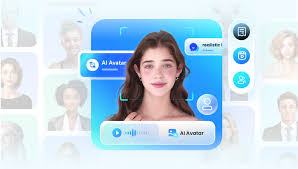The text input given by the user is spoken out loud using digital avatars or characters called AI text to speech (TTS) characters which makes these interactions more interactive and lifelike. Since these characters are powered by advanced natural language processing (NLP) and voice synthesis technology you get speech that is very closely impersonal of humans–with pitch, inflection, rhythm and emotion. Statista reports that the global TTS market will grow to $7.06 billion by 2028 due in part to increasing use cases of these technologies within customer service, content creation and virtual assistants [1].
This article contains beginner-friendly definitions of the key industry terms and concepts like: Neural voice cloning, Prosody modeling, Phoneme alignment that are essential in understanding these AI TTS characters. For those specific patterns of voices, cloning neural voice is made by the characters while making prosady models so as to be sure that speech reflects right emotional tone of them (like excitingly started, sadly end or curiously initiated). The phoneme alignment also makes sure that what the character is speaking can be seen on their lips while they speak making a complete audiovisual experience.
Recent examples show the effects of AI TTS characters. We are seeing platforms like Alexa or Google Assistant which have already expanded beyond the basic commands to offer more nuanced personalities within characters for story telling and game play. Within entertainment, AI TTS characters are finding new applications in video gaming and animated content to produce dynamic voiceovers without needing a typical VAD process. This is another ''Scripted and real-time dialogues in AI'' being used for diffrent media stating the ellasticity of AIs.

We have seen as mentioned from Microsoft CEO Satya Nadella, that “AI is changing the way we work with computing technologies are fundamentally transforming… it will help shape the future of human experience”. But his point also underlines the part where AI TTS characters can be more intuitive and emotionally engaging, whatever it comes to customer service or gaming. The notion of these characters is to provide a human like touch for brands so they can connect with users on an intimate level, creating real, scalable and text-O-personal interactive experiences.
AI TTS characters, however fall outside the category of just a voice customization. The flexibility is especially useful as this allows developers to fine-tune elements such as the pitch, speed and accent that are used so it can be utilized across wide language barriers and within different demographics. One more reason for its adoption is the cost-effectiveness of AI TTS. Voiceover projects of the past could be expensive as they were so time-consuming in terms of studio recording and editing. On the other hand, AI TTS solutions provide scalable offerings resulting in long time to deliver but generate high-quality speech with seconds which reduces production time and costs by upto 60%.
Products like ai text to speech characters helps you improve the way how AI TTS can be integrated and used with a few simple tools which enables one create custom voices for yourself easily. Built for a variety of use cases — From content creation to educational tools, these platforms offer flexibility in the tone and design voice characters.
Therefore, AI text to speech characters — via technology that can synthesize voice beyond human limits, dynamically adapt voices in real-time and assist users create custom vocal personas for their chat apps will change the way we use digital communication altogether. These technologies will remain central in the evolution of interactions across any digital platform, turning them from a functional necessity into entertaining and human-like multi-sensory experiences.